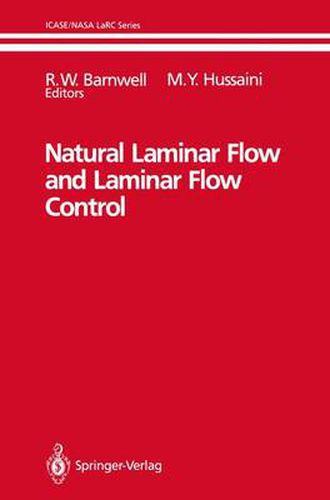Readings Newsletter
Become a Readings Member to make your shopping experience even easier.
Sign in or sign up for free!
You’re not far away from qualifying for FREE standard shipping within Australia
You’ve qualified for FREE standard shipping within Australia
The cart is loading…






This title is printed to order. This book may have been self-published. If so, we cannot guarantee the quality of the content. In the main most books will have gone through the editing process however some may not. We therefore suggest that you be aware of this before ordering this book. If in doubt check either the author or publisher’s details as we are unable to accept any returns unless they are faulty. Please contact us if you have any questions.
Research on laminar flow and its transition to turbulent flow has been an important part of fluid dynamics research during the last sixty years. Since transition impacts, in some way, every aspect of aircraft performance, this emphasis is not only understandable but should continue well into the future. The delay of transition through the use of a favorable pressure gradient by proper body shaping (natural laminar flow) or the use of a small amount of suction (laminar flow control) was recognized even in the early 1930s and rapidly became the foundation of much of the laminar flow research in the U.S. and abroad. As one would expect, there have been many approaches, both theoretical and experimental, employed to achieve the substantial progress made to date. Boundary layer stability theories have been formu lated and calibrated by a good deal of wind tunnel and flight experiments. New laminar now airfoils and wings have been designed and many have been employed in aircraft designs. While the early research was, of necessity, concerned with the design of subsonic aircraft interest has steadily moved to higher speeds including those appropriate to planetary entry. Clearly, there have been substantial advances in our understanding of transition physics and in the development and application of transition prediction methodolo gies to the design of aircraft.
$9.00 standard shipping within Australia
FREE standard shipping within Australia for orders over $100.00
Express & International shipping calculated at checkout
This title is printed to order. This book may have been self-published. If so, we cannot guarantee the quality of the content. In the main most books will have gone through the editing process however some may not. We therefore suggest that you be aware of this before ordering this book. If in doubt check either the author or publisher’s details as we are unable to accept any returns unless they are faulty. Please contact us if you have any questions.
Research on laminar flow and its transition to turbulent flow has been an important part of fluid dynamics research during the last sixty years. Since transition impacts, in some way, every aspect of aircraft performance, this emphasis is not only understandable but should continue well into the future. The delay of transition through the use of a favorable pressure gradient by proper body shaping (natural laminar flow) or the use of a small amount of suction (laminar flow control) was recognized even in the early 1930s and rapidly became the foundation of much of the laminar flow research in the U.S. and abroad. As one would expect, there have been many approaches, both theoretical and experimental, employed to achieve the substantial progress made to date. Boundary layer stability theories have been formu lated and calibrated by a good deal of wind tunnel and flight experiments. New laminar now airfoils and wings have been designed and many have been employed in aircraft designs. While the early research was, of necessity, concerned with the design of subsonic aircraft interest has steadily moved to higher speeds including those appropriate to planetary entry. Clearly, there have been substantial advances in our understanding of transition physics and in the development and application of transition prediction methodolo gies to the design of aircraft.